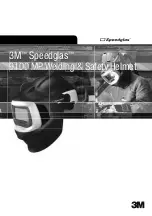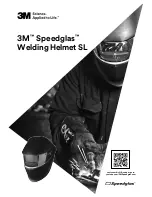
Figure 1
continued from preceding page
This mounting surface must meet the following condi
tions:
•
Choose a location where the switch will not be turned on or
off accidentally, but where it will be accessible to operate.
•
The switch must be installed on a plastic surface which is
¼-inch thick or less.
•
There must be enough space for the switch.
•
There must not be any metal directly behind the mounting
location.
•
There must not be any wiring or electrical components di-
rectly behind the mounting location.
•
You will remove the mounting nut (Figure 1) and the wiring
connectors (Figure 1) to install the switch. You must be able to
reach behind the switch to reattach them.
8.
Using a power drill with a ¾-inch bit or a ¾-inch flat auger
bit, drill a hole at the mounting location you have chosen.
9.
Remove the four wires from the switch by pulling on the
connectors until they separate from their terminals.
Note: if the connectors are difficult to remove from the
terminals, move them back and forth against the terminals as
you pull out.
10.
Remove the mounting nut.
11.
Position the switch in the hole, with the blank space (Figure
1) at the top.
12.
Reattach the mounting nut, with the serrated side toward
the switch, and hand-tighten it.
13.
Reattach the wiring connectors into their terminals on the
switch.
Note: each pair
of wires is bundled to-
gether. Connect one
pair of wires to the first
circuit terminals, as
shown to the right, and
the other pair to the
second circuit.
14.
Where possible,
slide the black split
loom over the wiring
connections and secure the loom with electrical tape.
15.
Tape the wiring if there is any exposed metal in the im-
mediate area of the switch.
16.
IMPORTANT — Install the fuses you removed from the
towed vehicle into the FuseMaster holders (Figure 2).
The black pair of wires is connected to the fuse holder
closest to the silver pins (Figure 3); the colored pair of wires
is connected to the other fuse holder. Insert the fuses into the
appropriate fuse holders, as shown in Figure 3.
CAUTION
A blown fuse, significant damage to electrical com-
ponents or other consequential damage may occur if
the fuses are not inserted into the correct fuse holder.
Confirm that the fuses are fully seated. Replace the protec-
tive cap (Figure 2).
Note: if the fuses you removed were ATM micro fuses,
install ATM mini fuses (not included) of the same amperage.
Figure 2
CAUTION
ALWAYS match the amperage of the fuse in the Fuse-
Master harness to the fuse removed from the towed
vehicle’s fuse panel. NEVER install a fuse with more than
a 20-amp rating into the FuseMaster harness.
Failure to follow these instructions may cause severe
damage to the vehicle’s electrical components. Other
consequential, non-warranty damage may also occur.
Operating instructions
When the top part of the switch
is depressed it is in the “drive”
position; when the bottom part of
the switch is depressed it is in the
“tow” position, as shown to the
right.
Mount the included “Drive” and
“Tow” stickers at the appropriate
sides of the switch.
Never flip the switch to the “tow” position while driv-
ing. If the switch is flipped, the electrical functions of
the switch FuseMaster has replaced will be lost.
A loss of power steering, power brakes and/or a loss
of vehicular control may result.
continued on next page
Figure 3





















